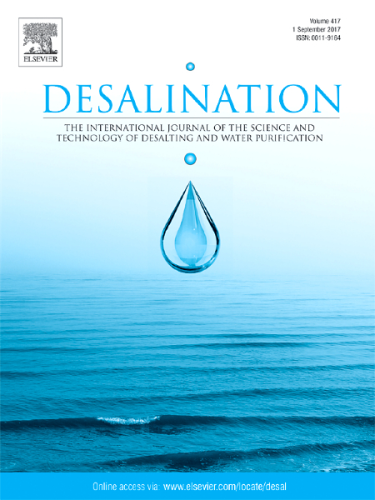
Abstract
The economics of seawater desalination processes has been continuously improving as a result of desalination market expansion. Presently, reverse osmosis (RO) processes are leading in global desalination with 53% share followed by thermally driven technologies 33%, but in Gulf Cooperation Council (GCC) countries their shares are 42% and 56% respectively due to severe feed water quality.
In RO processes, intake, pretreatment and brine disposal cost 25% of total desalination cost at 30-35% recovery. We proposed a tri-hybrid system to enhance overall recovery up to 81%. The conditioned brine leaving from RO processes supplied to proposed multi-evaporator adsorption cycle driven by low temperature industrial waste heat sources or solar energy. RO membrane simulation has been performed using WinFlow and IMSDesign commercial softwares developed by GE and Nitto. Detailed mathematical model of overall system is developed and simulation has been conducted in FORTRAN. The final brine reject concentration from tri-hybrid cycle can vary from 166,000 ppm to 222,000 ppm if RO retentate concentration varies from 45,000 ppm to 60,000 ppm.
We also conducted economic analysis and showed that the proposed tri-hybrid cycle can achieve highest recovery, 81%, and lowest energy consumption, 1.76 kWhelec/m3, for desalination reported in the literature up till now.



